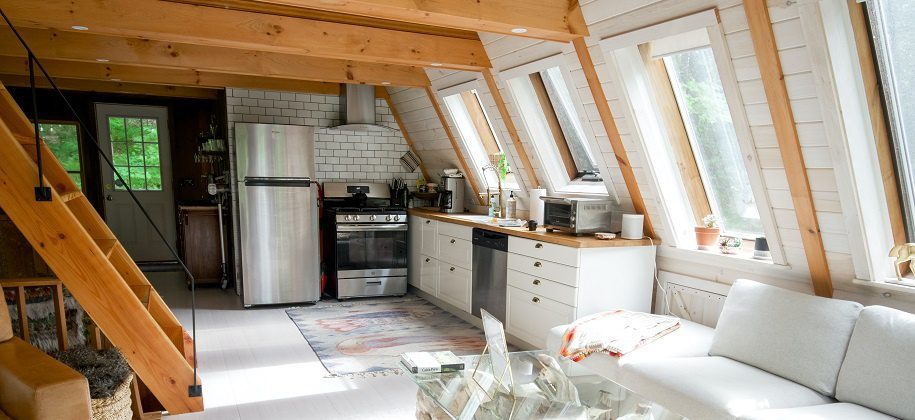Most loft conversion in London falls under the permitted development rights, so you do not need to get planning permission for the conversion.
However, if you plan to exceed certain conditions and limits, like altering the roof beyond its current limits, you would have to get planning permission.
You must also adhere to building regulations to ensure your loft conversion is safe.
Planning permission for a loft conversion
Becoming confused when getting planning permission is easy because the requirements are only sometimes easy for people to understand.
Getting planning permission will depend on the type of work you want to do on your property and the extent of work needed.
As you read, you will know whether the type of work you want on your property requires planning permission.
When do loft conversions fall under the permitted development rights?
The permitted development right applies when the work you want to carry out on your loft falls within limits and meets the conditions that apply to loft conversion listed in Schedule 2, Part 1, Class B of The Town and Country Planning (General Permitted Development) (England) order 2015.
It is best to get an architect to help you determine if you need planning permission or not. Converting a loft will not need planning permission if it falls under permitted development and meets the following criteria.
- The new loft in a terrace and detached houses will not exceed 40 cubic meters and 50 cubic meters, respectively.
- The loft will not extend beyond the existing roof plane at the front of the house, the principal elevation.
- The converted loft will not extend higher than the highest part of the existing roof.
- The loft conversion uses materials similar in appearance to other parts of the house.
- The side-facing windows will be obscure-glazed to prevent people from having a view from outside.
- The side-facing window must be at least 1.7m above the ground.
- The property is not within certain areas like World Heritage Sites.
- A roof extension, excluding hip-to-gable, has to be set back at least 20cm from the existing eaves.
- The roof extension should not overhang the outer wall of the house.
Any alteration that exceeds these conditions and limits above will need planning permission from the local authority.
You can apply for planning permission online on the planning portal in England or the planning website if you are in Scotland.
You can apply in Northern Ireland through the indirect website and Welsh planning portal in Whales.
The conditions and criteria above for permitted development are only for houses, so you must get planning permission if you live in the following properties.
- Maisonettes
- Flats
- Converted houses
- Other non-dwelling buildings
- Houses created through the permitted development right to change the use
- Houses where there are planning conditions or restrictions that limit the rights of permitted planning
Cost of planning permission
You would have to pay a general application fee for planning permission. However, the fee varies, starting from £206 for changes and extensions on a single dwelling and increasing with other alterations.
You may not need to pay an application fee for some applications, like buildings that need demolition in a conserved area or listed buildings.
You can get the exact application fee using the handy fee calculator on the planning portal.
How long does it take to get planning permission?
The local planning authority must decide on your planning application within a short time.
It should take at most eight weeks to decide on a straightforward planning application and 13 weeks for a complex one.
If your application needs an environmental impact assessment, you should get a reply within six weeks.
Building regulations for a loft conversion
Irrespective of the need for loft conversion planning permission, you have to follow specific building regulations and get building regulation approval on the planning portal.
Following building regulations is essential because they ensure your loft is stable and robust, safe to escape during a fire outbreak, and the stairs are correctly installed.
The building regulation to follow depends on the type of loft conversion you intend to carry out. They include:
Creating storage space
If you want to make your loft storage space, you must get building regulation approval because the timber acting as the floor in your loft (the ceiling for other rooms) cannot support significant weight.
It would be best to get building regulation approval to load excess weight on the joists beyond their capacity.
Creating living space
You need building regulation approval to convert your loft to a living space that you can use as a regular part of the house.
A complete loft conversion requires several changes that may affect the structure of the building. Without building regulations, a loft conversion will risk the occupants’ lives and the building.
Breakdown of building regulation
You may have to consider specific building regulations, but ensure you consult your local authority or architect before carrying out any building work.
Load-bearing walls
Consider how the walls will support the new loads. If you need floor joists, they have to support the existing wall connected to the house's foundation.
Removing rafters
To get proper lighting in your loft, you must create an existing rafter opening to install the roof window. You have to reinforce your roof to accommodate the extra load.
Beams and floor joists
The existing ceiling joists may not support the weight of the loft conversion, so you have to install new floor joists to carry the new load. You would also need sound insulation between semi-detached and terraced rooms.
Fire safety
The fire regulation for loft conversion requires the installation of additional protection between the loft and the rest of the house, the provision of smoke alarms at each level of the stairway and the installation of an escape window with a width of at least 45 cm.
Staircases
For a habitable loft, you need a staircase that acts as a fire escape if insufficient space exists. You may have to install a smaller staircase to save space, but not a retractable ladder.
You can only get a loft ladder to access the roof if your loft is storage space or you want to perform repairs.
Suppose you need clarification on these guidelines for a loft conversion but want to convert your loft to a liveable space.
In that case, you can contact Loft London, one of the best Loft conversion specialists in London, on 020 7100 5428 for a recommendation.

















Add Comment